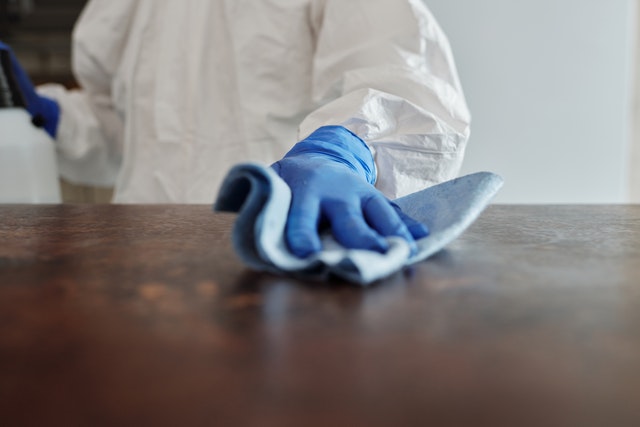Get Ready for a Home Inspection
As a homeowner, selling your home is one of the most difficult decisions you will ever make. That’s because, for most of us, our homes hold sentimental value, and selling them means letting go of the places where we have built precious memories with our loved ones.
On top of this, buyers will not value the home as much as you do, and you may have to wait weeks to find someone willing to make an offer on the property. But as Bigham & Associates PM Team warns, this is not a guarantee that their bid will be close to the value you place on your home.
That is why when you finally find one person who accepts your price and signs a purchase agreement, you don’t want to lose that buyer. You want to avoid giving them a legitimate reason to withdraw their offer and walk away from your property.
Is it possible for buyers to sign a purchase agreement with sellers and afterward terminate it? Yes, it is. Buyers will often make the completion of a purchase contingent on the outcome of the home inspection.
The inspection either confirms or contradicts your claims about the condition of your home. If it uncovers significant problems with the house, the buyer may abandon the deal without losing their earnest money. You don’t want this to happen.
But to keep it from happening, you should know the proper steps to prepare your home for inspection. There are few steps you can take to prepare your home for the assessment. That depends on where you are on the journey to sell the property.
Getting ready for the inspection
This is for you if you already listed the home and found a buyer for the property. It involves a series of tasks that will help make the home inspector’s job easier.
- Deep clean and tidy your home to make the right first impression.
- Clean the oven and stove thoroughly.
- Clean the furnace filter, replace, if necessary.
- Clear out or arrange storage in the attic and basement.
- Clear access to your electric service panel to allow inspection including in the panel.
- Ensure there is room for the inspector to access walls, appliances, and other features.
- Test the operation of mechanical features: doors, windows, knobs, cabinets, etc.
- Inspect toilets and flush to check their functionality.
- Run all faucets in the home to check the water pressure.
- Test light switches and fans. Look out for burnt bulbs.
- Test manual/automatic operation of garage doors, plus reverse safety mechanism.
- Visually inspect doors, windows, and cabinets for signs of aging or damage.
- Use the self-test function to check CO2/smoke detectors, replace batteries, if needed.
- Make sure fire extinguisher gauges are in the proper positions.
- Do thorough pest extermination for the entire premises.
- Look for signs of water damage in the bathroom and kitchen.
- Check appliances, walls, ceiling, and floor for signs of water damage.
- Open clogged drains and replace dirty grout.
- Replace torn screens, broken windows, and damaged insulation.
- Look for evidence of water pooling at the base of the house.
- Clear space around the perimeter to give the inspector access to the exterior.
- Remove debris from around foundation vents and A/C compressors.
- Have a roofing contractor inspect and clean the roof and make any required repairs..
- Replace missing or damaged shingles.
- Inspect and clean the gutters and downspouts.
- Trim tree branches that are close enough to touch the roof.
- Slope soil away from the building to improve drainage.
Doing a pre-listing home inspection
If you are about to list your home or have listed it but haven’t found a buyer yet, this second option is for you. A pre-listing inspection will eliminate any chance of the home inspection interfering with any purchase agreement you enter into with a buyer.
The pre-listing home inspection should be limited in scope to the major systems such as the foundation, roof, or structure and will cover many of the same itemsis the same as the buyer’s home inspection, with the lone exception that you are the one paying for it. Having your home inspected before you find a buyer for it has some distinct advantages:
- It will give you detailed information about the condition of your home’s structures, systems, and appliances, from a home inspector’s point of view.
- You will be able to determine which repairs will make the most impact on the home’s value.
- You will have a more factual basis for deciding how much to sell the home.
- Negotiations with buyers will be transparent since they already know the existing issues with the home (you are required to disclose the outcome of a pre-listing home inspection to buyers).
- You will not be anxious during the buyer’s home inspection.
Last-minute preparations before inspection day
One day before the home inspection, do these:
- Make sure utilities are on.
- Ensure pilot lights on gas-fired appliances are on and they are functional.
- Empty the dishwasher, oven, sink, washer, and dryer.
- Gather all maintenance paperwork into a folder.
- Leave keys, codes, and remote control on the kitchen table for easy access.
- Provide detailed directions and sketches for locating any features that are hard to find.
Finally, on inspection day, get your family and pets together and be ready to stay away for at least three hours. Good luck.
Neal Boyd is a guest writer with Bigham and Associates providing property management services in the Greater Austin Area.
https://bighamassociates.com/




Recent Comments